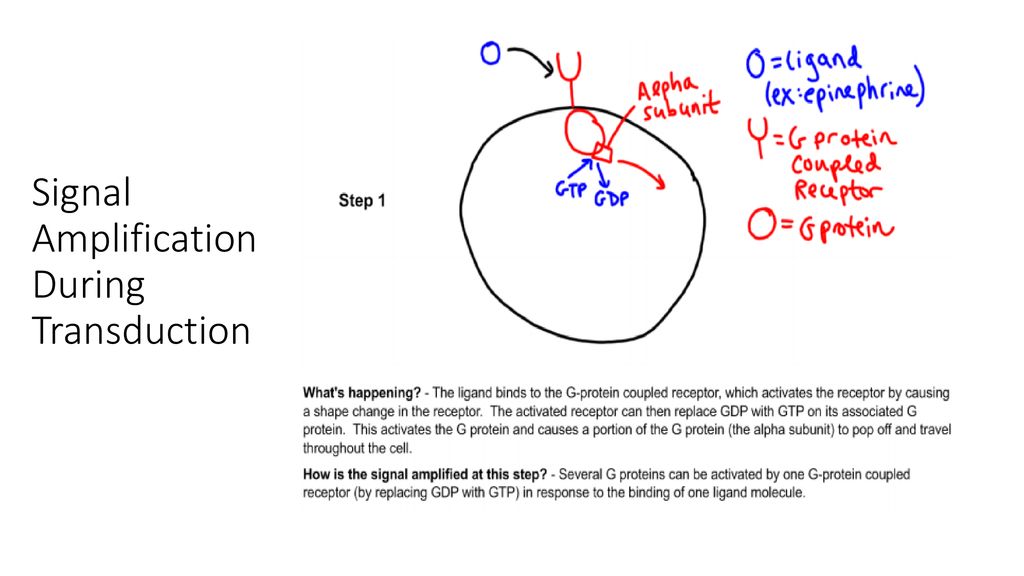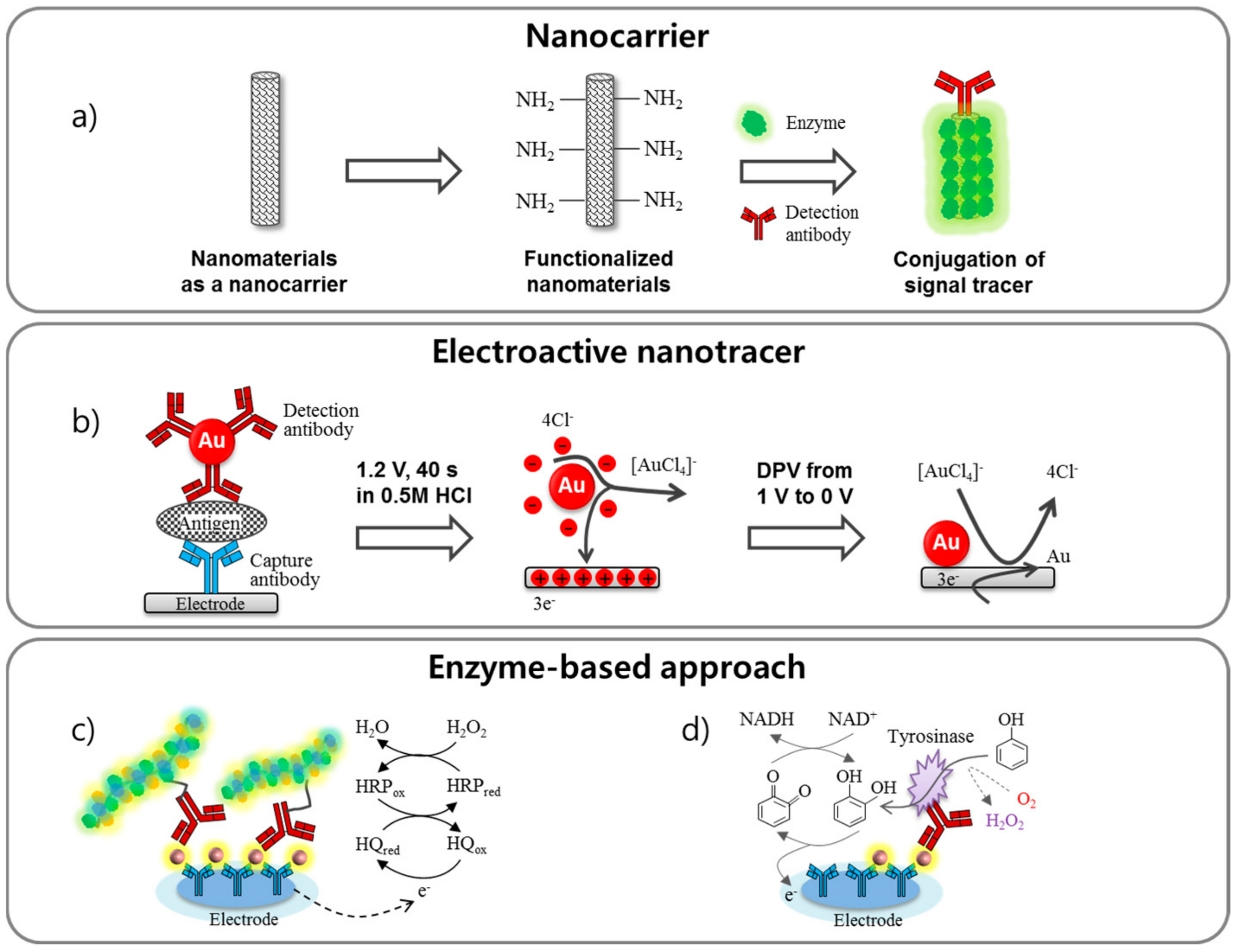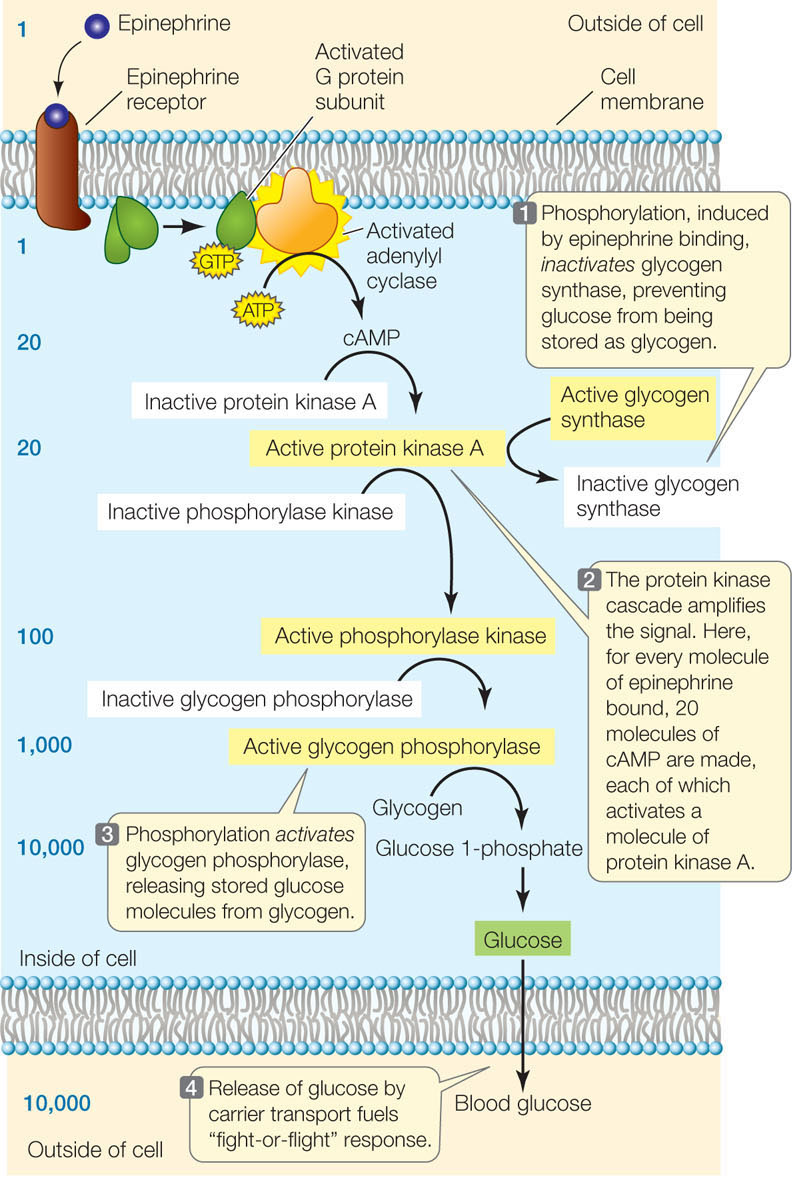Signal Amplification Is Most Often Achieved by
Coli receptors resided in large clusters at the cell poles Fig. All of the above.

Cancers Free Full Text Fluorescence Sensing Using Dna Aptamers In Cancer Research And Clinical Diagnostics Html
Allele-specific amplification also called the amplification refractory mutation system ARMS is based on the inability of many DNA polymerases to extend a primer if the base at the 3 end of the primer does not form a perfect match with the corresponding base in the DNA template Fig.
. Damplify the message by phosphorylating proteins E dampen the message once the signal molecule has left the receptor. See full answer below. The difficulty in accomplishing this is that one needs to amplify the signals without also amplifying the noise.
Signal amplification is most often achieved by a phosphorylation cascade involving multiple relay proteins If we studied the effects of epinephrine on liver cells we might conclude that. C relay the message from the inside of the membrane throughout the cytoplasm. Enzyme digestion technique could not only be utilized to digest non-target DNA and improve consequently the sensitivity of SPR assay but also be adopted to reuse the target DNA through repeated cycles of hybridization cleavage and dissociation thereby resulting in obvious signal amplification.
Most important steps in many analytical measurements is to amplify the signal. Most cell surface receptors stimulate intracellular target enzymes which may be either directly linked or indirectly coupled to receptors by G proteins. The first clue to the amplification mechanism of chemoreceptors was provided in 1993 by Maddock Shapiro who discovered that the E.
Signal amplification is most often achieved by A the binding of multiple signal molecules. Signal amplification is most often achieved by Cell Signaling. MCP-family receptors in many other bacterial species have since been shown to cluster in similar fashion.
Which of the following is an example of a second messenger. Extension can take place only if a perfect match exists. Signal amplification is most often achieved by.
The most common enzymes include Enzyme exonuclease III. Most often the active element is a transistor a vacuum tube a tunnel diode a parametric diode a voltage-variable capacitor or an inductance coil with a core made of a ferromagnetic material. What is signal amplification achieved by.
B an enzyme cascade involving multiple protein kinases. Action of adenylyl cyclase. It allows for the amplification of the signal.
This makes the signals stronger so that things get done more quickly. Signal amplification is when receptor proteins interact with molecules known as signal molecules. Signal amplification is most often achieved by.
View the full answer. Operational amplifiers or op-amps are the most practical way of amplifying signals for the vast majority of all analytical measurements. Signal amplification is an elaborate enzyme cascade used to directly increase the signal in proportion to the amount of target in the reaction and benefits the cell by eliciting a coordinated response that can release hundreds of millions of molecul.
There is a second messenger that transmits the signal of epinephrine binding on the plasma membrane to the enzymes involved in glycogen breakdown inside the cell. Signal amplification is achieved by enzymatic action in a cell. Action of adenylyl cyclase.
We review their content and use your feedback to keep the quality high. Binding of multiple signals. Enzymes can catalyze the production of several signalling molecules in a short time.
When detecting specific biomolecules in cells in tissues and on microarrays enzyme-mediated detection methods can provide significant signal amplification due to catalytic turnover of fluorogenic chemiluminescent or chromogenic substrates. Action of adenylyl cyclase. It allows for the distribution of the signal throughout the inside of the cell.
Binding of multiple signals. Signal gain through clustering. Signal amplification is most often achieved by.
Signal amplification by reversible exchange SABRE is a para-hydrogen-based technique that utilises a metal complex normally centred on iridium to propagate polarisation from para-hydrogen-derived hydride ligands to spin-½ nuclei located in a bound substrate. Signal amplification is most often achieved by. 721 students attemted this question.
Because fluorescence and chemiluminescence methods are potentially much more sensitive than colorimetric methods. Such amplification consists in the control through some active element of the amplifier power supply by the signal being amplified. Binding of multiple signals.
These intracellular enzymes serve as downstream signaling elements that propagate and amplify the signal initiated by ligand binding.

Chapter 11 Signal Transduction Pathways Signal Transduction Pathways Why What Happens Inside Of Studocu

Cell Signaling By Receptor Tyrosine Kinases Cell

Unit 5 Part 1 Notes Basics Of Cell Signaling Ppt Download

Signal Amplification An Overview Sciencedirect Topics

Unit 5 Part 1 Notes Basics Of Cell Signaling Ppt Download

Sensors Free Full Text Current Technologies Of Electrochemical Immunosensors Perspective On Signal Amplification Html

12 Introduction To Signal Transduction Principles Of Pharmacology Study Guide

Signal Transduction Pathway Cell Signaling Article Khan Academy

Engineering Signal Transduction Pathways Cell

Sensors Free Full Text Current Technologies Of Electrochemical Immunosensors Perspective On Signal Amplification Html

Signal Amplification In Gpcrs Activation Download Scientific Diagram

Signal Transduction An Overview Sciencedirect Topics

Life Cycle Of Receptors G Proteins And Second Messengers Definition Examples Camp Ip3 Pip2 Functions And More Biochemistry Microbiology Study Life Cycles


Comments
Post a Comment